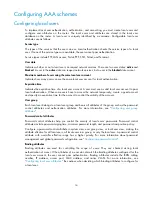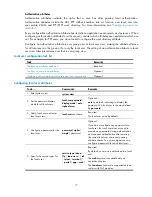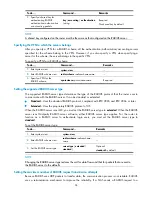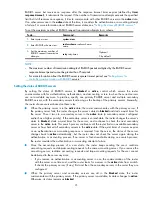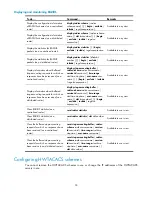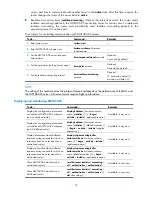
29
NOTE:
The backup source IP address specified for outgoing RADIUS packets takes effect only when stateful
failover is configured, and it must be the source IP address for outgoing RADIUS packets that is
configured on the standby router.
Setting timers for controlling communication with RADIUS servers
The router uses the following types of timers to control the communication with a RADIUS server:
•
Server response timeout timer (
response-timeout
)—Defines the RADIUS request retransmission
interval. After sending a RADIUS request (authentication/authorization or accounting request), the
router starts this timer. If the router receives no response from the RADIUS server before this timer
expires, it resends the request.
•
Server quiet timer (
quiet
)—Defines the duration to keep an unreachable server in the
blocked
state.
If a server is not reachable, the router changes the server's status to
blocked
, starts this timer for the
server, and tries to communicate with another server in the
active
state. After this timer expires, the
router changes the status of the server back to
active
.
•
Real-time accounting timer
(
realtime-accounting
)—Defines the interval at which the router sends
real-time accounting packets to the RADIUS accounting server for online users. To implement real-
time accounting, the router must periodically send real-time accounting packets to the accounting
server for online users.
To set timers for controlling communication with RADIUS servers:
To do…
Command…
Remarks
1.
Enter system view.
system-view
—
2.
Enter RADIUS scheme view.
radius scheme
radius-scheme-
name
—
3.
Set the RADIUS server
response timeout timer.
timer response-timeout
seconds
Optional
3 seconds by default
4.
Set the quiet timer for the
servers.
timer quiet
minutes
Optional
5 minutes by default
5.
Set the real-time accounting
timer.
timer realtime-accounting
minutes
Optional
12 minutes by default


